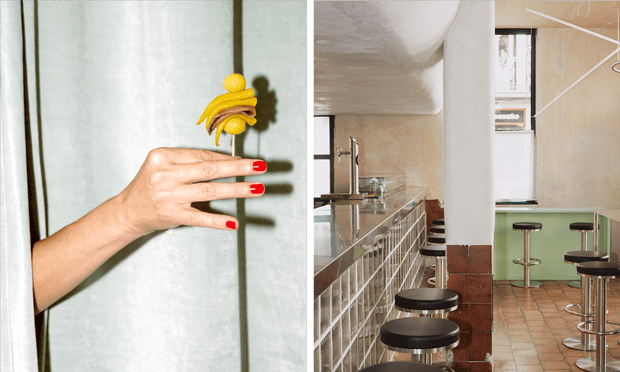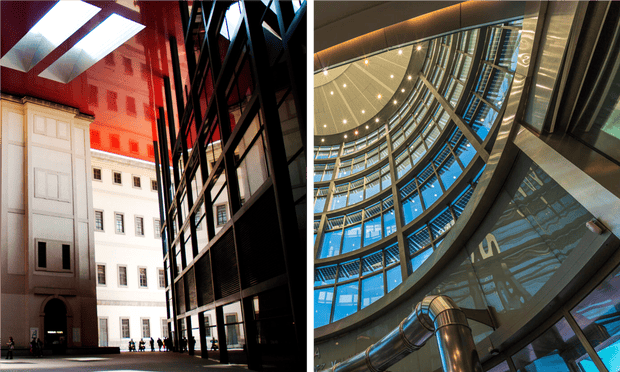Standing in Madrid’s Puerta del Sol square, a brass plaque underfoot marks Spain’s geographical centre. This is the point from which distances to the rest of the country are measured – it is quite literally the heart of the nation. Stroll through here within the next year, however, and you’re likely to find this historic square undergoing a major redesign, with plans for glass pavilions, cycle lanes and new granite paving.
Aptly for the city’s literal core, Puerta del Sol’s transformation is being mirrored across Madrid – the city is taking on a new topography. Following Madrid Rio, the emblematic Plaza de España has recently received a makeover, while the Madrid Nuevo Norte urban regeneration project aims to breathe new life into the north of the city.
As its urban landscape evolves, so too does the Spanish capital’s image, showing off a heightened style and polish without abandoning its authentic character. From a string of new luxury hotel openings to a sophisticated dining scene that’s challenging perceptions of Spanish culinary culture, Madrid’s significance on the world stage is growing, taking a lead in culture and creativity, retail, hospitality and gastronomy. Here’s where to experience Madrid 2.0 in all its glory.
Food
Madrid may be the proud home of Botín, said to be the world’s oldest restaurant, but the city’s contemporary dining scene is looking to the future, eager to cater to worldly, discerning diners.
The opening of Michelin-starred Dabiz Muñoz’s new venture, RavioXO – in El Corte Inglés Castellana – last month was a reminder of how Madrid’s cutting-edge gastronomical offer is reaching wider audiences. The broad appeal of Muñoz’s style – edgy but accessible – is apparent in his expanding street food offering, StreetXO, launched in 2012 in El Corte Inglés, which has been leading a food revolution of its own, filling its in-store restaurants with Michelin-starred chefs.
Other openings to note in the city’s smart dining sector: Saddle rolled out its uber-fine dining operation (think caviar, foie gras and Mont Royal pigeon), while the Sandoval brothers behind the extravagant Coque unveiled a more informal cousin, Coquetto, and chef Javier Goya at Triciclo group opened Sua this year, a modern asador for flavoursome meats.
Elsewhere, many recent openings cast a global gaze: Asiakō fuses Basque and Japanese cuisine and El Hombre Pez looks for links between Cantabria and India, while Nômâda (designed to resemble a Bedouin tent) is a culinary voyage into North Africa, celebrating Spain’s Islamic history.
But where Madrid really triumphs is in showcasing Spain’s gastronomical diversity, gathering and revamping traditions from across the country. Safe Cruz’s tasting menu at Gofio reinvents Canary Island classics such as ropa vieja (pulled beef stew with chickpeas) and carne fiesta (marinated pork). Cantabria’s Jesús Sánchez, Marbella’s Dani García and Denia’s Quique Dacosta have also opened new restaurants here within the past two years, enriching the capital’s palette with their regional delicacies.

Drink
While we’re looking forwards, it’s worth sparing a moment for the classics – and Madrid has historic bars in spades. Bow-tied servers pour classic cocktails at prohibition-style boltholes Bar Cock and Museo Chicote. Both date back to the early 20th century and have been frequented by Spanish artists and intellectuals including Luis Buñuel and Salvador Dalí, as well as Hollywood stars Ava Gardner and Audrey Hepburn. Steeped in history and expensive liquor, such venues uphold the memories of Madrid’s old-timers.
Others, meanwhile, refresh cocktail culture with contemporary flair. Angelita’s artisanal drinks menu features seasonal ingredients from the owners’ family farm; in the Lavapiés neighbourhood, Lithuanian couple Gintas and Dovi offer a pared back, carefully crafted selection at Savas, while hip, handsome crowds have been filling modern-day speakeasy Ciriaco Brown since it opened in 2019.
But to drink like a real Madrilenian, make time for some sweet vermouth as an aperitif. Casa Camacho and Bodega de la Ardosa are among the city’s historic vermuterías, while La Gildería (specialising in gildas – olives, anchovies and piparra peppers skewered on a cocktail stick – to nibble with your drink) and La Hora del Vermut (quite simply, “the hour of the vermouth”) look to rejuvenate this fortified wine for a new generation.
Shopping
From under-one-roof emporiums to independent concept stores, Madrid’s streets are full of establishments that encapsulate the creativity and diversity of the city’s design scene – and in recent years, their appeal has broadened for UK visitors, who now shop tax-free.
Almost as iconic as Puerta del Sol itself is the distinctive green lettering of Spain’s shopping mecca El Corte Inglés – whose flagship on Calle de Raimundo Fernández Villaverde, one of the biggest department stores in the world, champions Madrid’s new-generation designers beside luxury brands. And it’s good news for Brits: El Corte Inglés offers extra incentives for UK shoppers.
Outside, take to the streets to browse what the city’s neighbourhoods have to offer. Start with the swish boulevards of the Salamanca district, visiting Spanish powerhouses such as Adolfo Domínguez, Balenciaga and Loewe. Next, head to the smart concept stores in barrios Malasaña and Chueca, from Casa González & González and Amen to El Moderno and Despacio.
Interior design fans should also stop and see Iñigo Aragón and Pablo López Navarro at Casa Josephine, among the numerous furniture and decoration outlets in El Rastro – where you’ll also find a lively flea market on Sundays.
Shopping in Madrid is also a deep dive into some of Spain’s most important craft traditions. Trailblazing brand Loewe started in 1846 as a humble collective of leatherwork artisans, today it’s a global champion for craftsmanship in the luxury sector. To get a first-hand feel for Spain’s rich history of leatherwork, pop into the ateliers such as Taller Puntera and Mayorpiel. Testament to Spain’s ceramics traditions are the likes of Sargaledos – Galician ceramicists whose goods feature their signature cobalt blue – and La Oficial, where you can buy beautiful clay goods by weight. Ribes y Casals and Julián López are immersions into the magnificence of Spanish fabrics.

Culture
Calling Madrid an arts powerhouse is hardly new, but the historic institutions that first gave the city its cultural capital are, too, shaking things up – adding modern perspectives to classical foundations.
At the back of the Reina Sofía museum of modern and contemporary art is French architect Jean Nouvel’s 2005 extension: its angular form, red colour and glossy finish are a thrilling divergence from the 18th-century building in which the rest of the museum is housed. Along with the Thyssen-Bornemisza and Museo Nacional del Prado (where Norman Foster’s renovation of the Hall of Realms is expected in coming years), you’ve got Madrid’s well-trodden “golden triangle” of art. This is a must for the historic blockbusters, from Diego Velázquez and El Greco to Francisco Goya and Pablo Picasso – but an alternative route might paint a more up-to-date picture …
La Casa Encendida hosts a daring programme of offbeat exhibitions, including the annual Generación festival celebrating young artists. At Matadero Madrid, set in a former slaughterhouse, current shows include a sound installation by Janet Cardiff and George Bures Miller and an immersive digital experience of Gustav Klimt. Nearby, the Black Spanish collective Conciencia Afro, which organises Madrid’s annual Afro-Awareness Festival, has recently opened a new cultural space.
Host of the annual Arco Madrid art fair, the Spanish capital also holds a wealth of homegrown contemporary art dealerships, such as Elvira González, Juana de Aizpuru and Max Estrella, trading some of the most valuable names on the market. Across town, Calle Doctor Fourquet is the hub of commercial art galleries in the Lavapiés neighbourhood, home to Helga de Alvear and Maisterravalbuena.
Hotels
Going where the action is – an excellent indicator of a city on the up – major international hotel brands have set their eyes on Madrid recently, drawn to the charm of its historic buildings and seeing a chance to freshen them up for the modern-day traveller.
The Four Seasons marked its Spanish debut here in 2020; soon after Mandarin Oriental Group gave the 110-year-old Ritz a major makeover; and the cherished Villa Magna hotel relaunched last autumn as a stylish Rosewood property. Joining these is the Madrid Edition, which opened recently with a clean-lined, contemporary look that contrasts with the 16th-century monastery standing just opposite. Bringing a touch of glamour to Madrid’s hotel scene, it’s yet another tête-à-tête between old and new that is found across the Spanish capital.
 Top Naija News: Nigerian News, Breaking News Nigeria and World News Top Naija News is a daily news publication in Nigeria, delivering the latest breaking news in Nigeria and around the world.
Top Naija News: Nigerian News, Breaking News Nigeria and World News Top Naija News is a daily news publication in Nigeria, delivering the latest breaking news in Nigeria and around the world.



